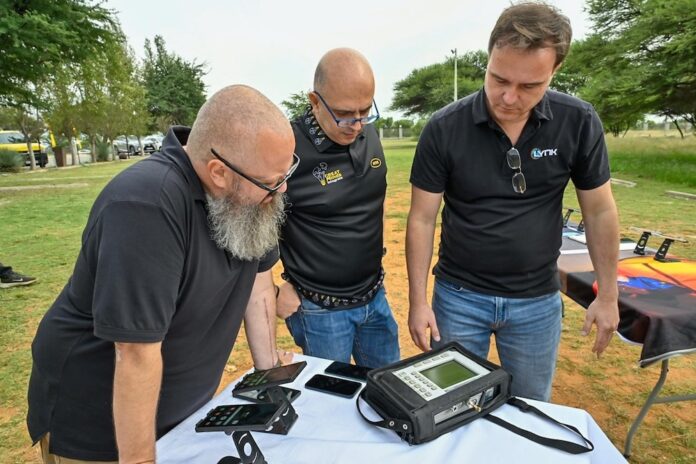CEO Ramu Potarazu has also been sharing his views on life after SPAC and LEO market consolidation
Lynk Global has asked the US Federal Communications Commission (FCC) for temporary authority to operate feeder links in the S-Band as part of a South African trial, with an unnamed mobile operator, aimed at testing direct-to-device (D2D) voice calling. In a filing to the FCC, Lynk requested a 60-day special temporary authorisation (STA) from 22 September 2025 to operate its small satellite system with one non-US earth station at Pretoria’s Kitty Hawk Aerodrome.
The system would use 2025-2110 MHz (uplink) and 2200-2290 MHz (downlink) for feeder communication to support a mobile network operator during basic voice call demonstrations.
The mechanics of the test are straightforward: the Pretoria ground station will act as a feeder link, connecting user traffic to the satellite in orbit, which then relays to other nodes in the Lynk smallsat system. Unlike user-facing transmissions, feeder links must operate within strict spectrum allocations because they carry aggregated traffic and satellite control signals.
That requirement introduces coordination issues. Lynk confirmed it had reached agreement with NASA, NOAA, the US Air Force and NTIA for short-term operations. NASA flagged that the South African National Space Agency (SANSA) uses the same S-Band for active space missions, and warned that any long-term use at the Pretoria site would require duty cycle limits to protect those activities. For this trial, however, NASA allowed a 100% duty cycle given the temporary nature of the work.
Probably MTN?
While limited in scope, the Pretoria trial underlines Lynk’s strategy of building regulatory clearances and technical evidence for D2D services. The FCC request follows a March 2025 demonstration with MTN South Africa, where the two companies completed Africa’s first satellite-to-mobile device voice call in the North West province (above). MTN chief executive Charles Molapisi called that test a “proof of concept” for using low-Earth orbit satellites to extend coverage into underserved rural areas.
For Lynk, the S-Band STA represents a small but necessary next step: not a commercial launch, but a test of whether feeder links can reliably sustain voice connectivity under real-world conditions, while satisfying spectrum coordination constraints in a crowded band.
The LEO market heads for consolidation
Chief executive Ramu Potarazu says the company is pushing ahead with plans to scale its satellite-to-phone network following the collapse of a proposed merger with Slam Corporation, a special purpose acquisition company (SPAC) led by Alex Rodriguez. Potarazu described the decision to walk away from the deal as “amicable” after legal disputes were resolved, adding that it frees the Virginia-based startup to pursue growth without the pressures of going public too soon.
The company currently operates five low Earth orbit (LEO) satellites that provide intermittent messaging and alert services to mobile network operators (MNOs) in island nations. Lynk aims to expand this into a global service by 2027, supported by a partnership with Luxembourg-based SES, which recently acquired Intelsat.
Under the arrangement, Lynk will focus on deploying cost-effective LEO satellites while leveraging SES’s geostationary and medium Earth orbit infrastructure, spectrum resources, and global distribution network. “That all feeds into our capital-efficient model,” Potarazu said.
Lynk plans to launch additional satellites in February to test multi-orbit capabilities with SES. The company is also preparing a new funding round later in the year. Potarazu said Lynk is well capitalised for the next two years but will need further investment to complete its constellation, emphasising that costs will remain “a fraction” of the multi-billion-dollar budgets of rivals such as SpaceX’s Starlink and AST SpaceMobile.
Differentiation in the crowded direct-to-device sector, Potarazu argued, will come from Lynk’s multi-orbit strategy, reliance on partnerships, and focus on mobile applications such as messaging, banking, and IoT before moving into broadband services after 2027.
He added that regulatory collaboration and MNO partnerships will be critical, noting that the company has signed agreements with more than 50 operators globally. “The market won’t support 20 players,” Potarazu said, predicting eventual consolidation but positioning Lynk as a nimble, capital-efficient alternative.




